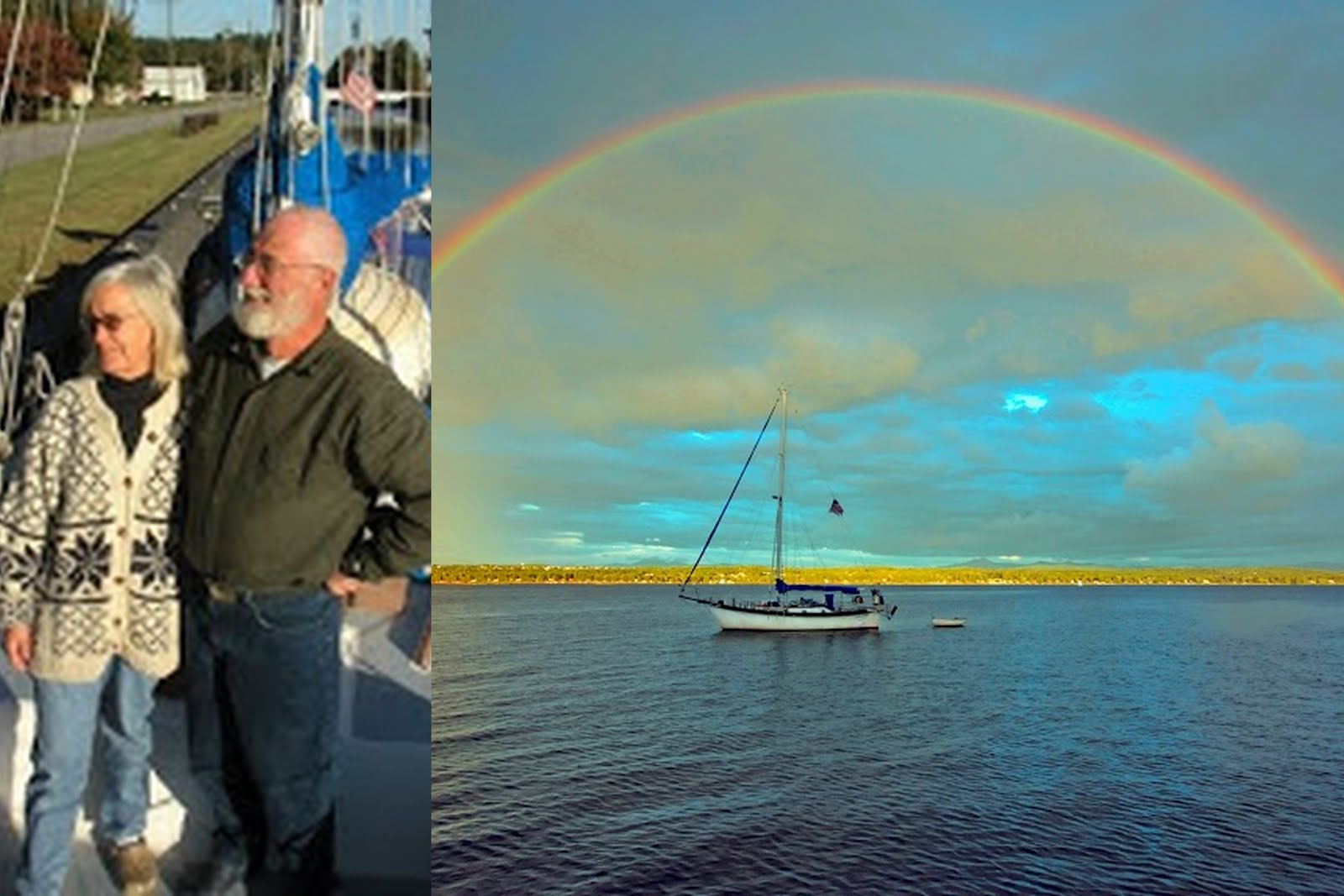Pasquotank River
36 18.99 N 76 11.07 W
We've been having a couple of fine days at the welcome center and at our "secret" favorite anchorage on the Pasquotank. I've been neglecting the blog however. I know a lot of readers want to hear more about our bad experience at sea last weekend. I'll explain the biggest and scariest equipment failure today.
Absolutely the most frightening thing that ever happened to us on the boat was when the mast side stays fell down while at sea during a gale. I was scared to death that we would be dismasted, and we nearly were. Only good luck and solid Westsail construction prevented it from becoming a full scale disaster.
So what really happened? The mast on a W32 is supported by a forestay, a backstay, port and starboard cap stays, plus four sidestays, port and starboard. That is not to mention a staysail stay and two running backstays. A total of 11 stays if everything is deployed. In this case, we left our running backstays in Vermont, and I had temporarily removed the staysail stay to make it easier to gybe the jib (in retrospect I should have furled the jib and said with staysail only.) The cap stays go all the way to the top of the mast. The side stays fasten to the middle of the mast just under the spreader. They prevent the mast from bending like a bow.
The four side stays are fastened by a single bolt that goes all the way through the mast plus a nut on the far side. Stainless tangs adapt the stays to the bolted points. The nut is a 1/2" nylon locking nuts. In my experience, locking nuts never come loose accidentally, but in this case it did. When the nut fell off, the side stays on the port side fell to the deck. I believed that I still had support from the starboard stays so I changed course to keep the wind on the starboard side. It didn't do any good, the bolt pulled out most of the way, then it bent like a pretzel. The starboard side stays didn't fall down but they flopped loosely, not contributing any support to the mast.
From that moment, all the way in to save harbor, I was terrified by the actions of the mast. The mid part of the mast, near the spreaders, swayed about four inches from side to side, with every roll of the boat. Normally, the mast is rigidly attached and stayed and there is zero apparent motion of the mast relative to the boat.
I contacted Bud Taplin. Bud will send me replacement tangs, bolt and nut. Until then, I have some strong low-stretch lines from the spreaders to the chain plates to support and protect the mast. I won't sail at all until things are repaired.
Here are a few pictures. When everything is repaired and back in place I'll post a photo showing how it is supposed to look.
It is said that the W32 is the safest stoutest modern production boat ever built. I believe it. Nevertheless, loosing that nut is an extremely critical single-point failure mode. We lost four stays because of that one nut.
Why did the nut come off? I'll never know for sure. It is highly suspicious that only a few days before we used cranes to lower, then re-raise the mast. The ropes used for lifting snuggle right under those tangs. Suspicious as it is, the coincidence of timing is no proof of cause and effect. However, one thing I'll certainly to in the future is to make one last trip up and down the mast in a boatswain's chair for a re-inspection of all rigging after the mast is re-raised. We have had the mast down and up 10 times now; the first 9 times without problem. I'm afraid that I got too complacent about it.
| The Fallen Port Side Stays From Fall 2010 |
| The slack starboard side stays From Fall 2010 |
 |
| See the bolt and stays hanging under the spreader. From Fall 2010 |
| A close up of the bolt and tangs before removal From Fall 2010 |
 |
| The bold and bent tangs after removal From Fall 2010 |
My analysis of lessons learned will take a few more days. I want to sleep on the lessons a few more days before publishing them.





A couple of thoughts:
ReplyDelete1. Nylocs are specified to be used only once.
2. Are you sure the yard used a Nyloc at all?
3. I don't want to set you to worrying, but I'd be looking for an opinion on whether the mast has be damaged at the point it was flexing so much. Can an X-ray tell anything? Ultrasound? Maybe a sleeve now would prevent the need later on.
Sail on!